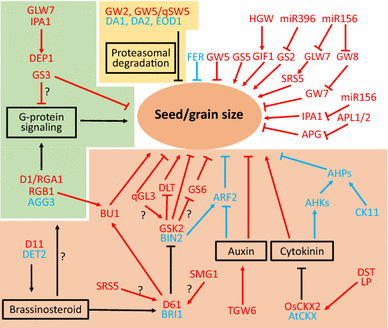Protocol for PCR-Cas9 RNP Assay
Purification of Cas9 protein
Day 1: Cell transformation
- Add ~200 ng of plasmid DNA (pMJ806) to 50 μl of freshly thawed BL21 competent cells and incubate on ice for 15 min.
- Heat-shock cells by incubation at 42 °C for 45 s, then place cells on ice for further 3 min.
- Add 500 μl of LB medium to the cells and incubate the culture at 37 °C for 1 h in a shaking incubator.
- Plate 100 μl of culture out on LB agar containing 50 μg ml-1 kanamycin.
- Incubate plates overnight at 37 °C.
Day 2: Culture growth and induction
- Pick one colony from the agar plate and inoculate 50 ml LB medium containing 50 μg ml-1 kanamycin.
- Incubate the preculture at 37 °C in a shaking incubator (250 rpm) overnight.
- Use 10 ml of the preculture to inoculate 1 L prewarmed LB medium supplemented with 50 μg ml-1 kanamycin in a 2.8L flask.
- Incubate the cultures at 37 °C in a shaking incubator (90 rpm) while monitoring the cell growth by measuring optical density at 600 nm (OD600).
- Reduce the temperature to 18 °C at an OD of ~ 0.8 and continue shaking for additional 30 min.
- Add 150 μl 1 M isopropyl-β-D-1-thiogalactopyranoside (IPTG) to each flask (200 μM final concentration) for induction of protein expression.
- Continue shaking at 18 °C overnight for another 12-16 h.
Day 3: Cas9 purification by using TALON Spin Columns
- Harvest cells by centrifugation for 15 min at 3500 rpm (~2700 x g) in a swingbucket rotor in 1 L bottles.
- Decant the supernatant and resuspend the cell pellets using ~20 ml ice-chilled lysis buffer (20 mM Tris-Cl, pH 8.0, 250 mM NaCl, 5 mM imidazole, pH 8.0, 1 mM phenylmethylsulfonyl fluoride) per cell pellet from 1 L culture.
- Resuspended cell pellets can either be used directly for further purification or flash frozen in liquid nitrogen and stored at -80 °C for several months without loss of Cas9 enzymatic activity.
- Lyse the resuspended cell pellets using a ultrasonic homogenizer (Branson Digital Sonifier Model 102C). The lysate should be cooled on ice between passes.
- Clarify the lysate by centrifugation in 50 ml Nalgene Oak Ridge tubes at 18,000 rpm (~30,000 x g) in an SS-34 rotor (or equivalent) for 30 min at 4 °C. Collect the supernatant.
Note: Steps 18 and 19 should be performed at 4 °C. Equilibrate 0.5 ml of TALON-NX Resin (Takara) packed in a spin column with 2 ml lysis buffer. Load the cleared lysate on the column through centrifuge.
- Wash the columns with 2 ml wash buffer (20 mM Tris-Cl, pH 8.0, 250 mM NaCl, 10 mM imidazole, pH 8.0) for three times. Elute with 400 μl elution buffer (20 mM Tris-Cl, pH 8.0, 250 mM NaCl, 250 mM imidazole, pH 8.0) three times and collect in 2 ml microtubes.
- Dialyze the sample in dialysis tubing in 1 L dialysis buffer (20 mM HEPESKOH, pH 7.5, 150 mM KCl, 10 % (v/v) glycerol, 1 mM dithiothreitol (DTT), 1 mM EDTA) at 4 °C overnight. Dialysis buffer (without DTT and glycerol) can be prepared as a 10 x stock, but DTT should be added immediately prior to use. Measuring the Cas9 protein concentration by using NanoDrop 2000 spectrophotometer.
Preparation of guide RNAs
Construction of transcription vectors
- Synthesize a gBlock containing T7 promoter, guide RNA scaffold, and two BsaI cloning sites in between, was synthesized.
- Insert the gBlock into pENTR4 between NcoI and XbaI through Gibson assembly replacing the ccdB cassette, resulting in pT7-sgRNA.
- Synthesize two complementary oligonucleotides for the spacer sequence of sgRNAs, anneal them form a double stranded DNA fragment, and then cloned into BsaI sites in pT7-sgRNA.
In vitro transcription and purification
- Linearize pT7-sgRNA derived gRNA-specific construct using restriction enzyme site NcoI.
- Dephosphorylate the digestion with Shrimp Alkaline Phosphatase (rSAP) (New England Biolabs, Ipswich, MA).
- Purified with DNA Clean and Concentrator Kit (Zymo Research, Irvine, CA).
- Thaw the HiScribe T7 Quick High Yield RNA Synthesis Kit (New England Biolabs, Ipswich, MA) components, mix and pulse-spin in microfuge to collect solutions to the bottoms of tubes. Keep on ice.
- Set up the reaction at room temperature in the following order:
Reaction set up for short transcripts (< 0.3 kb):
| Nuclease-free water | x µl |
| NTP Buffer Mix | 10 µl (final NTP concentration 6.7 mM) |
| Template DNA | y µl (1 µg) |
| T7 RNA Polymerase Mix | 2 µl |
| Total | 30 µl |
- Mix thoroughly and pulse-spin in a microfuge. Incubate at 37 °C for 16 hours.
- Add 30 µl nuclease-free water to each 20 µl reaction, followed by 2 µl of DNase I (RNase-free), mix and incubate for 15 minutes at 37 °C. (This step is to remove template DNA).
- Purify the products with RNA Clean and Concentrator (Zymo Research).
- Measure the concentration by using NanoDrop 2000 spectrophotometer.
PCR/RNP cleavage Assays
- Mix 1μg of sgRNA and 1μg of Cas9 protein in 6 µl 1x Cas9 reaction buffer.
- Incubated at room temperature for 15 min to form ribonucleoprotein (RNP) complex.
- Set up RNP reaction as follows:
| RNP | 2 µl |
| PCR product (1 µg) | x µl |
| Water | y µl |
| Total | 10 µl |
- Incubate the reaction at 37 °C for 3 hours.
- Inactivate the reaction at 65 °C for 15 minutes.
- Analyze the digestion immediately with electrophoresis in 2% agarose gel.
